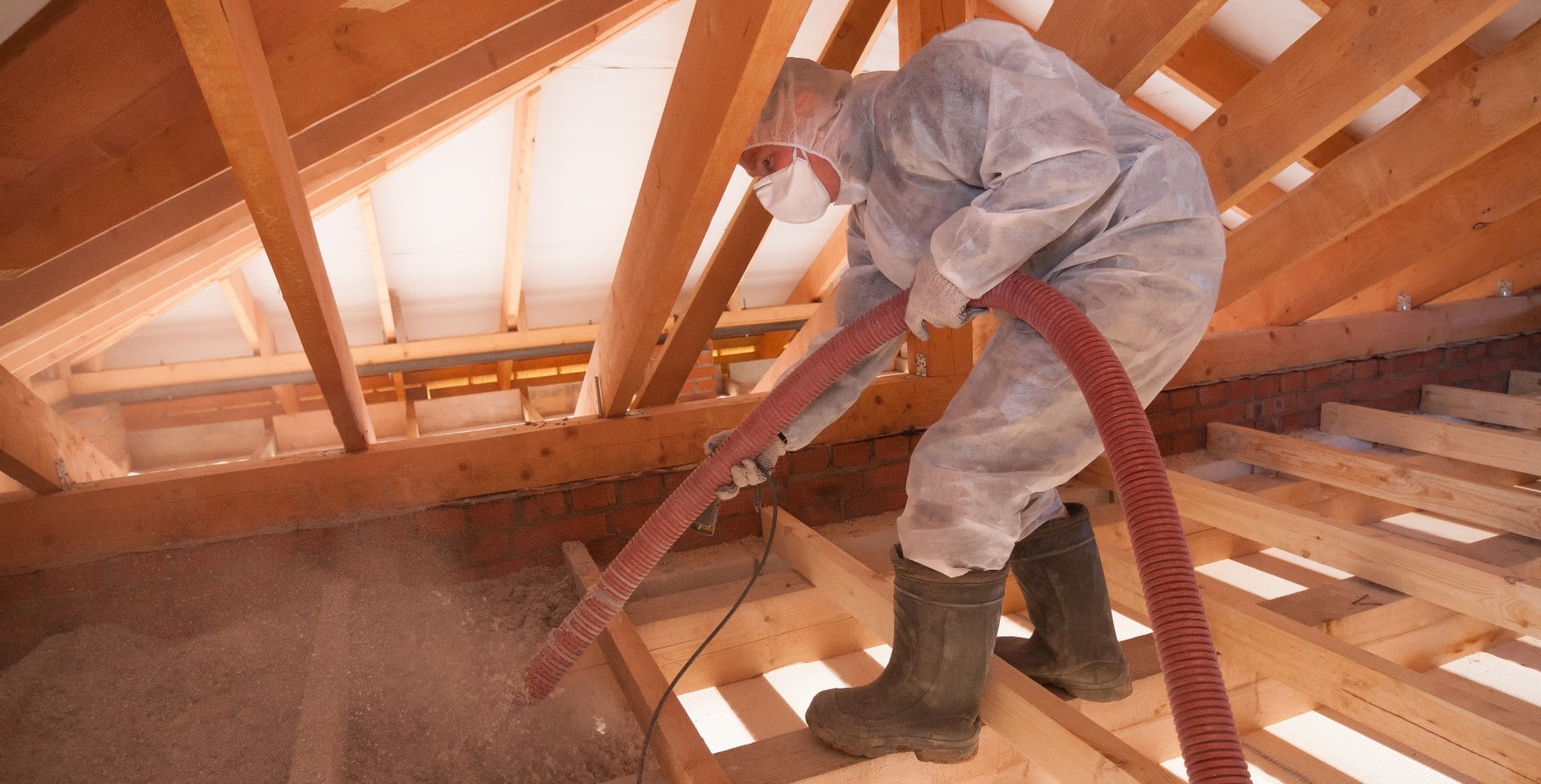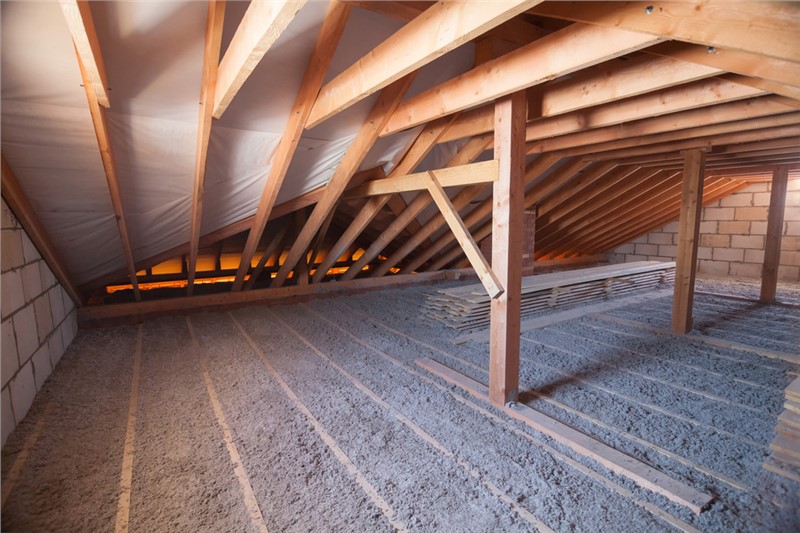The Ultimate Overview to Picking the Right Attic Insulation DFW Provider
Wiki Article
Discover the Different Kinds Of Attic Insulation and Their Special Advantages for Your Home's Energy Effectiveness

Fiberglass Insulation
Fiberglass insulation is among the most generally used materials for attic insulation because of its outstanding thermal performance and cost-effectiveness. Made up of small glass fibers, this product effectively catches air, developing a shielding barrier that aids preserve constant interior temperature levels. Its high R-value per inch makes it especially efficient at withstanding heat transfer, which is critical for power conservation in homes.
Setup of fiberglass insulation is reasonably uncomplicated, commonly available in batts or loose-fill types, suiting various attic room configurations. Furthermore, it is immune and non-combustible to wetness, decreasing the danger of mold development. This resilience contributes to its durability, making fiberglass a viable long-lasting investment for home owners.
Additionally, fiberglass insulation is usually produced from recycled products, which enhances its eco-friendliness. The product can additionally add to soundproofing, reducing sound transfer between spaces. While it is important to wear protective gear during installation to avoid inflammation from the fibers, the total advantages of fiberglass insulation, consisting of power savings and ecological factors to consider, make it a preferred selection for improving attic room performance and advertising a comfy living atmosphere.
Spray Foam Insulation
Spray foam insulation is a very reliable choice for attic room insulation, recognized for its remarkable air sealing and thermal efficiency. This innovative insulation product is composed of a combination of isocyanate and polyol resin, which, when integrated, expands rapidly to load gaps and tooth cavities in the attic room space. Its capability to abide by numerous surfaces makes sure a continual obstacle versus air leakages, considerably decreasing heat loss during colder months and warm gain throughout warmer seasons.Among the vital benefits of spray foam insulation is its high R-value per inch, which suggests it supplies superb thermal resistance in a fairly thin application. This is specifically beneficial in attics where room is usually limited. Furthermore, spray foam can aid lessen wetness accumulation, decreasing the risk of mold and mold development, which can be harmful to both the framework and indoor air high quality.
While the first expense of spray foam insulation may be greater than traditional options, its long-lasting energy savings, combined with increased comfort and improved home worth, make it a rewarding investment for property owners looking for improved energy performance. Attic Insulation DFW. In general, spray foam insulation stands apart as a reliable service for enhancing attic room insulation
Cellulose Insulation

Cellulose insulation is a popular choice for attic room insulation, largely composed of recycled paper products treated with fire retardants. This eco-friendly choice is understood for its superb thermal performance, efficiently decreasing warmth transfer in both summer season and winter season. The dense make-up of cellulose allows it to load voids and voids in attic rooms, providing a seamless obstacle versus air leakages.
Among the substantial advantages of cellulose insulation is its capability to resist mold and insects, owing to the fire retardant therapies used during production. Furthermore, it flaunts a high R-value per inch, which converts right into premium power effectiveness. Homeowners can expect lower cooling and heating next prices as a result of boosted insulation.
Installation is generally accomplished via blowing loose cellulose into the desired location, enabling for a efficient and quick procedure. This approach additionally decreases interruption to the existing structure. Cellulose insulation has a relatively low ecological influence, as its manufacturing procedure uses recycled products, adding to lasting building practices.
Rock Wool Insulation
Amongst the numerous alternatives for attic insulation, rock woollen, likewise called mineral wool, stands apart because of its excellent thermal and acoustic efficiency. Made from recycled or all-natural products, rock woollen is created by thawing rock and spinning it into fibers, causing a product that uses exceptional insulation properties.One of the substantial benefits of rock wool insulation is its high R-value, which indicates its efficiency in standing up to heat circulation. This characteristic not just improves energy performance yet also adds to keeping a comfortable interior temperature level year-round. In addition, rock wool is inherently fireproof, making it a much safer alternative for homes as it can stand up to heats without melting or launching harmful fumes.
Moreover, rock woollen insulation succeeds in soundproofing capabilities, successfully minimizing noise transmission in between spaces and from outdoors resources. This makes it a suitable option for home owners looking for a serene living atmosphere. Rock woollen is moisture-resistant, aiding to avoid mold growth and keeping the architectural integrity of the attic room room. Generally, rock woollen insulation offers an extensive remedy for improving energy effectiveness, safety and security, and convenience in household setups.
Glowing Obstacle Insulation
Radiant obstacle insulation works as an efficient remedy for minimizing warm transfer in attic rooms, particularly in warmer climates. This kind of insulation works by showing convected heat far from living spaces, thus minimizing the amount of heat that gets in a home throughout hot weather - Attic Insulation DFW. Generally composed of a very reflective product, such as light weight aluminum foil, radiant barriers are mounted in attic rooms, dealing with the roofing system, where they can intercept incoming warmth from the sunlightThe main benefit of glowing barrier insulation is its capacity to reduced air conditioning prices. By showing warm instead of absorbing it, glowing obstacles can help maintain a much more steady interior temperature level, reducing the workload on a/c systems. This effectiveness converts right into lower power check it out bills and boosted comfort for home owners.
In enhancement to power financial savings, radiant barriers can additionally contribute to improved indoor air high quality. By minimizing heat build-up, they assist reduce moisture levels, which can avoid mold and mildew development and enhance overall air blood circulation. When set up properly, radiant obstacle insulation can be an indispensable enhancement to any type of energy-efficient home, making it a worthy factor to consider for property owners seeking to boost their attic room insulation strategy.
Final Thought
In conclusion, comprehending the numerous types of attic room insulation-- fiberglass, spray foam, cellulose, rock wool, and radiant barriers-- makes it possible for property owners to make enlightened decisions relating to energy effectiveness. By picking the proper insulation product, substantial decreases in power expenses read the full info here can be accomplished, along with enhancements in interior comfort.

In conclusion, recognizing the various types of attic room insulation-- fiberglass, spray foam, cellulose, rock wool, and radiant obstacles-- enables home owners to make informed decisions pertaining to power efficiency.
Report this wiki page